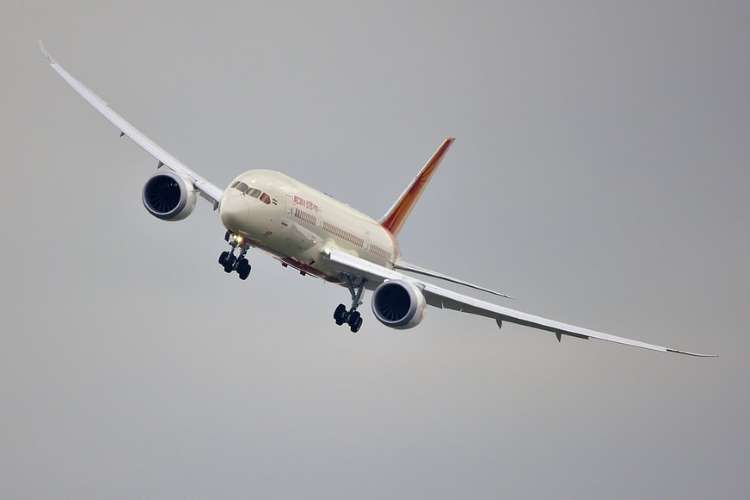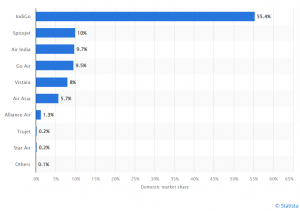
Tata Group-owned Air India has placed the biggest aircraft order ever — 470 planes from Boeing and Airbus at a cost of $70 billion. The order includes both short-haul aircraft for domestic flights and long-haul carriers that can fly to the US and Europe. The purchase is a milestone in Indian aviation history and its significance cannot be lost with Prime Minister Narendra Modi and French President Emmanuel Macron making a virtual appearance for the announcement. In fact, other Indian carriers are also expected to place huge orders to lift the underpenetrated Indian aviation sector.
Air India’s record deal for 470 planes comes at a time when the carrier looks to become a truly world-class operator as suggested by N Chandrasekaran, chairman of the Tata Group. Air India broke the previous record for the biggest order in aviation history held by American Airlines which signed a 460-plane deal in 2011. The biggest order by an Indian carrier before this was IndiGo’s 300-aircraft order in 2019. Together, Air India and Air India Express have a fleet of around 140 planes, a majority of them narrowbody aircraft.
READ | Decline in trade deficit may be transitory; India needs calibrated policy
The significance of Air India order
The enormity of the order is indicative of Air India’s desire to reclaim its position in India’s crowded aviation market and to acquire a strategic edge to service the world. With the backing of the trusted Tata name and the sheer size of the fleet, the airlines will look to counter the dominance of Gulf carriers which are currently the preferred option for outbound travellers. Emirates, Qatar Airways, Etihad and other Middle Eastern airlines dominate overseas routes to Europe, the US and other parts of the world.
Market share of airlines in financial year 2021-22

With the new acquisition, the airlines will also be able to make deep inroads in markets like the US and Australia by non-stop flights from and to India. These are lucrative routes to service the massive Indian diaspora in these countries.
Air India’s fall from grace
Air India was purchased back by the Tata Group at a time when most airlines were struggling on account of the coronavirus pandemic and Air India was no exception. Before the acquisition by Tata Group, Air India had been under fire with consumer grievances over ill-maintained cabins, dysfunctional entertainment systems and broken charging points. The airline was also short of human resources and trained personnel. The airline was once the epitome of global standard. Air India was founded by the Tatas and the airline was nationalised in 1950s.
The company was bought back by its original owners after years under the civil aviation ministry. It was troubled by mounting debt and the government made several attempts to revive it to its former glory. The Tatas purchased the airline back in a $2.4 billion deal in 2021. According to consulting and advisory firm CAPA India, the fact that Air India was able to make an order of this magnitude is a testament to how the divestment of Air India has strategically and positively reset the aviation industry in India, positioning it to realise its potential. This was simply not possible under public ownership.
Indian aviation: The highs and lows
Like most other industries, the aviation industry also faced serious trouble with the coronavirus pandemic disrupting operations. The aviation, tourism and hospitality industries were the worst hit by the pandemic. The industry also saw the collapse of Kingfisher Airlines and Jet Airways.
The Indian aviation market recorded a sharp recovery after the pandemic. The domestic traffic grew by nearly 50% year-on-year. More than 122 million Indians took domestic flights in December 2022 alone. The potential of the aviation industry is evident from the fact that the country will have 80 new airports in the next five years.
India also is expected to be a major player in the global aviation industry’s recovery. For this to happen, other airlines such as Indigo and Go First also need to expand their fleet. Meanwhile, domestic carriers are expected to place orders for 1,500-1,700 aircraft over the next two years, according to Centre for Asia Pacific Aviation India (CAPA India) estimates. Currently, all Indian carriers together operate about 700 aircraft. Some of the global behemoths alone operate a much larger fleet than this. Prime example is American Airlines has a fleet of 935 aircrafts.
While placing orders is the easy part of the whole process. The real challenge lies in preparing the entire aviation eco-system to absorb these orders. India is projected to be one of the fastest-growing aviation markets in the world in the next 20 years. The growth is expected to be driven by factors such as rising incomes, a large middle class, and increasing urbanisation.
The industry face several challenges such as high fuel costs, environmental concerns, and increasing competition. Airline companies will need to focus on operational efficiency, cost control, and sustainability to stay competitive in the long term. The aviation industry will need to focus on innovation, infrastructure development, and efficiency of operations to ensure sustainable growth.
